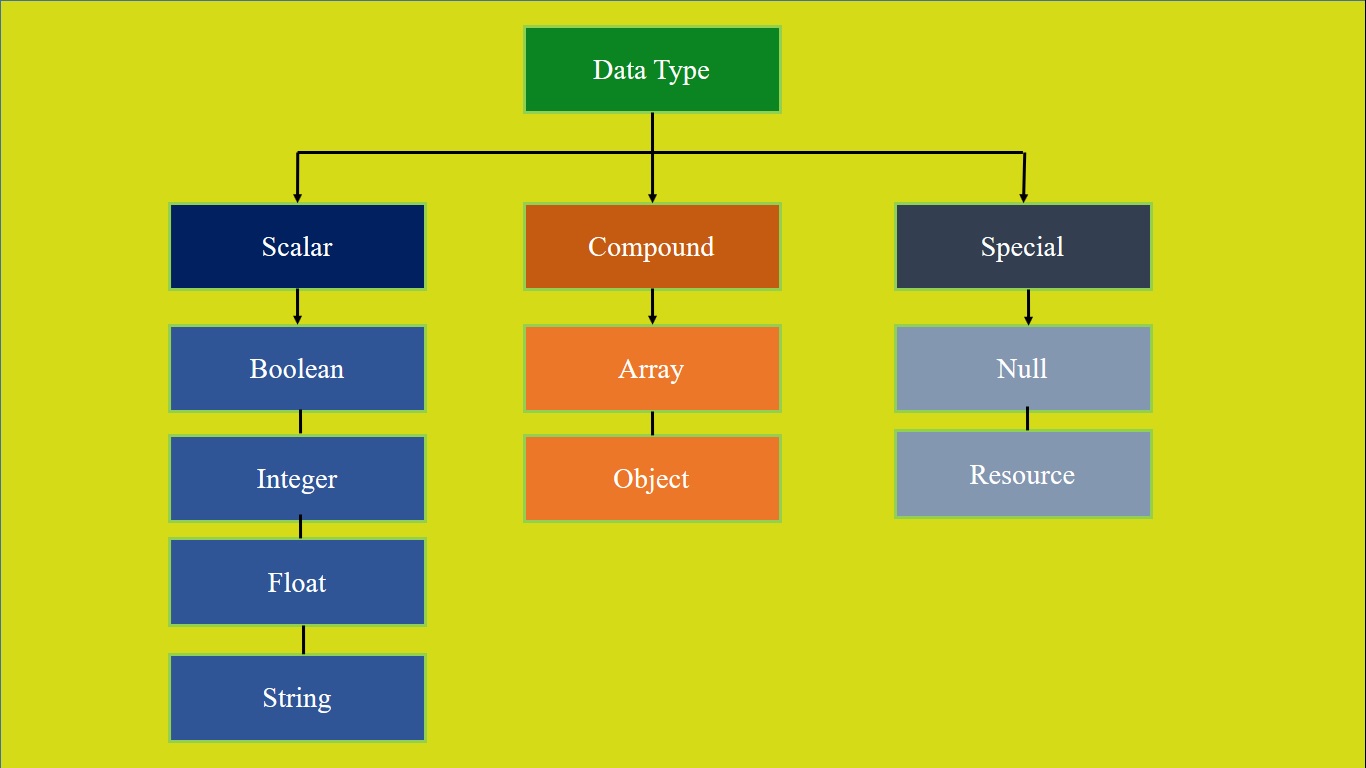Data Types define the type of data a variable can store. PHP allows eight different types of data types. All of them are discussed below. There are pre-defined, user-defined, and special data types.
The predefined data types are:
- Boolean
- Integer
- Double
- String
The user-defined (compound) data types are:
- Array
- Objects
- NULL
- resource
The special data types are:
PHP String
A string is a sequence of characters, like "Hello world!".
A string can be any text inside quotes. You can use single or double quotes:
Example:
PHP Integer
An integer data type is a non-decimal number between -2,147,483,648 and 2,147,483,647.
Rules for integers:
- An integer must have at least one digit
- An integer must not have a decimal point
- An integer can be either positive or negative
- Integers can be specified in: decimal (base 10), hexadecimal (base 16), octal (base 8), or binary (base 2) notation
In the following example $x is an integer. The PHP var_dump() function returns the data type and value:
Example:
PHP Float
A float (floating point number) is a number with a decimal point or a number in exponential form.
In the following example $x is a float. The PHP var_dump() function returns the data type and value:
Example:
PHP Boolean
A Boolean represents two possible states: TRUE or FALSE.
Booleans are often used in conditional testing. You will learn more about conditional testing in a later chapter of this tutorial.
PHP Array
An array stores multiple values in one single variable.
In the following example $cars is an array. The PHP var_dump() function returns the data type and value:
Example:
PHP Object
Classes and objects are the two main aspects of object-oriented programming.
A class is a template for objects, and an object is an instance of a class.
When the individual objects are created, they inherit all the properties and behaviors from the class, but each object will have different values for the properties.
Let's assume we have a class named Car. A Car can have properties like model, color, etc. We can define variables like $model, $color, and so on, to hold the values of these properties.
When the individual objects (Volvo, BMW, Toyota, etc.) are created, they inherit all the properties and behaviors from the class, but each object will have different values for the properties.
PHP NULL Value
Null is a special data type which can have only one value: NULL.
A variable of data type NULL is a variable that has no value assigned to it.
Tip: If a variable is created without a value, it is automatically assigned a value of NULL.
PHP Resource
The special resource type is not an actual data type. It is the storing of a reference to functions and resources external to PHP.














0 Comments